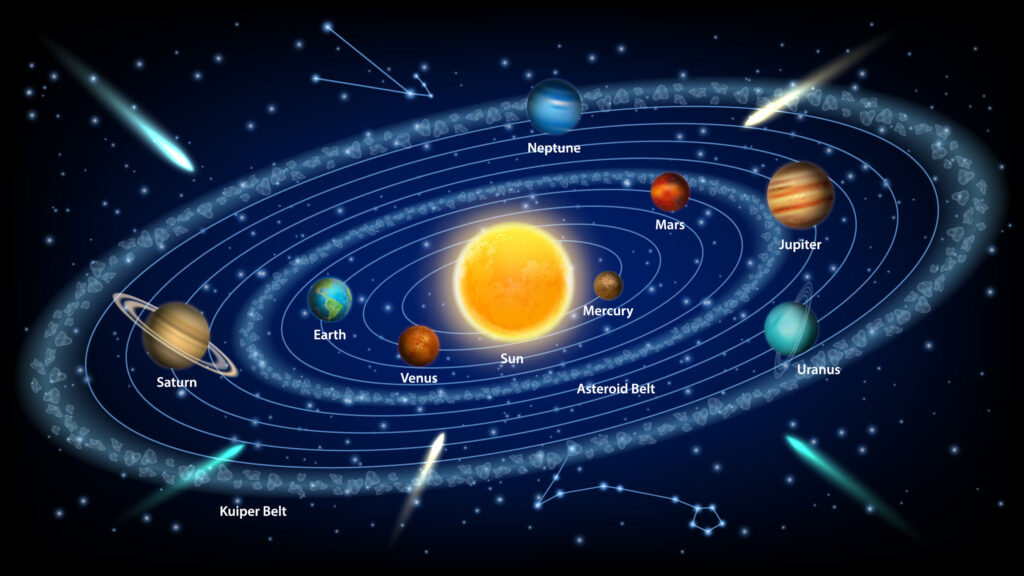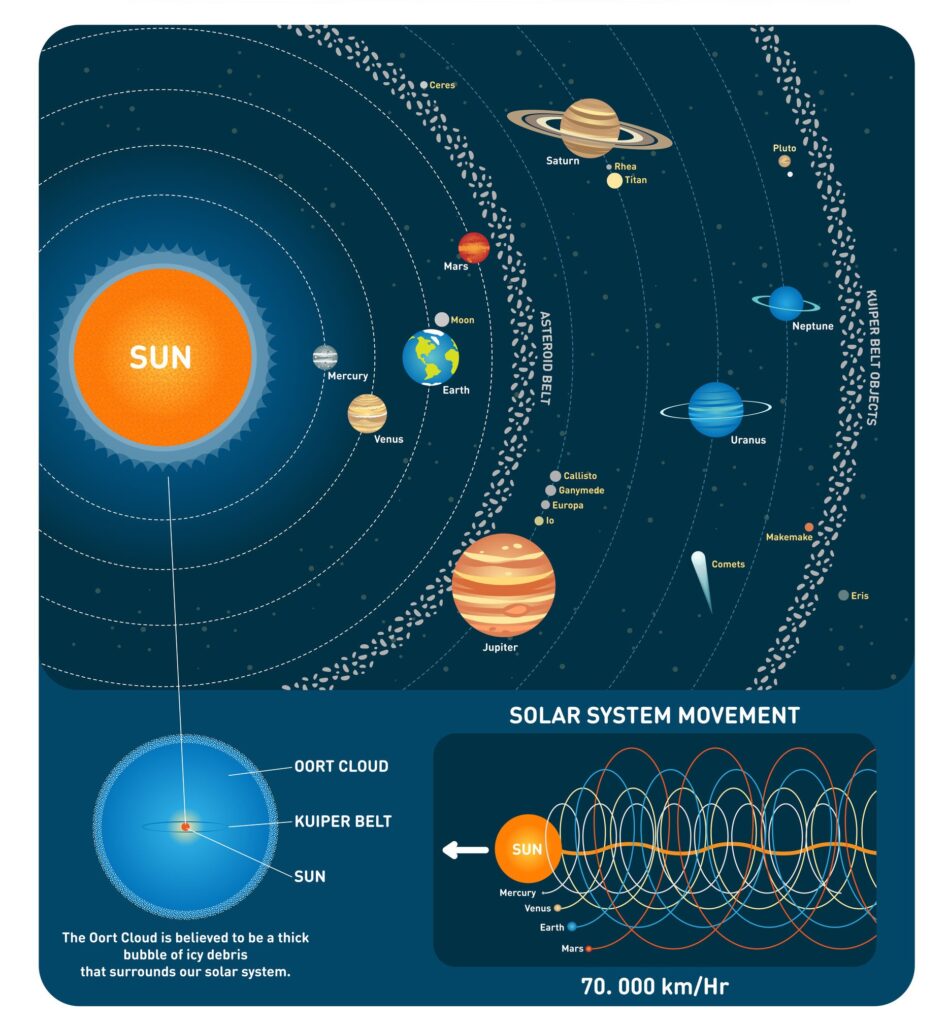The solar system is our celestial neighbourhood. This fascinating expanse of planetary bodies are bound together by the gravitational pull of the Sun. From the fiery heart of the Sun to the icy edges of the Kuiper Belt, our neighbourhood is a dynamic and diverse system that offers amazing wonders to explore.

The Solar System is the gravitationally bound system of the Sun and the objects that orbit it, either directly or indirectly. The Sun is a giant ball of plasma that provides the light and heat necessary for life on Earth. This star is composed mostly of hydrogen and helium and drives the solar system’s dynamics. The orbits of planets to the behaviour of comets are all connected to the Sun. The Sun generates the energy that sustains our planet and fuels the processes that make Earth habitable.
The largest objects that orbit the Sun directly include the eight planets, and smaller objects, like dwarf planets and small Solar System bodies.
The eight planets each with unique characteristics:
- The Rocky Inner Planets: Mercury, Venus, Earth, and Mars are terrestrial planets with solid surfaces. They differ in atmosphere, climate, and potential for hosting life, with Earth being the only planet known to support life.
- The Gas Giants: Jupiter and Saturn dominate with their immense size, thick atmospheres, and extensive moon systems. Jupiter’s Great Red Spot and Saturn’s iconic rings make them particularly fascinating.
- The Ice Giants: Uranus and Neptune, composed mainly of ices and gases, are mysterious worlds with striking features like Neptune’s deep blue colour and Uranus’s tilted axis.
Between Mars and Jupiter lies the asteroid belt, a region filled with rocky remnants from the solar system’s formation. Beyond Neptune, the Kuiper Belt and scattered objects like comets extend the system’s boundaries, while the Oort Cloud marks its outermost edge—a region still largely unexplored.
There are over 200 moons orbiting planets in our solar system. Some, like Jupiter’s Europa and Saturn’s Enceladus, may harbor subsurface oceans and the potential for life.
Dwarf planets, including Pluto, Haumea, and Ceres are part of the solar system’s diversity. These smaller worlds, often found in the Kuiper Belt, challenge our understanding of planetary science.

The solar system is not just a collection of celestial objects; it’s a system of endless discovery. From missions like the Voyager probes, which continue to send data from interstellar space, to rovers exploring Mars, humanity’s quest to understand this cosmos is ongoing.
The solar system is a reminder of Earth’s interconnectedness with the universe. It’s a source of inspiration, knowledge, and perspective. As we explore its mysteries, we deepen our understanding of our place in the cosmos and the delicate balance that sustains life on Earth.

